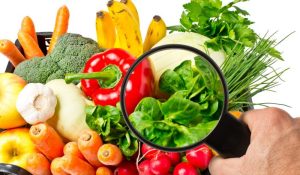Introduction: The Crucial Role of Food Safety in Agriculture
In the agricultural industry, the journey from farm to table is a complex and intricate process. Ensuring food safety at every step of this journey is paramount to protect consumers from potential hazards and illnesses. In this blog, we’ll explore the critical importance of food safety in agriculture and the comprehensive measures in place to safeguard the quality and integrity of the food we consume.
The Fundamentals of HACCP Certification
HACCP, which stands for Hazard Analysis and Critical Control Points, is a systematic approach to food safety that has become a cornerstone of the agricultural industry. HACCP certification is a globally recognized standard that places a strong emphasis on the prevention of food safety hazards rather than simply relying on end-product testing. This certification encompasses various sectors of the food industry, including agriculture.
To achieve HACCP certification, agricultural producers and processors must conduct a thorough analysis of potential hazards in their operations. These hazards can range from microbial contaminants to chemical residues and physical hazards like foreign objects. Once these hazards are identified, critical control points (CCPs) are established. CCPs are specific points in the production process where hazards can be controlled, reduced, or eliminated.
The Significance of Soil Quality and Pesticide Management
At the very heart of agricultural food safety lies the quality of the soil. Soil quality not only impacts crop yields but also influences the safety of the produce. Monitoring and managing soil quality is crucial to prevent contamination of fruits and vegetables with harmful microorganisms. Soil testing, crop rotation, and organic matter incorporation are strategies to maintain healthy soil conditions.
Pesticide management is another integral aspect of food safety in agriculture. While pesticides are used to protect crops from pests and diseases, their misuse can result in residue levels that exceed safe limits. Integrated pest management (IPM) practices emphasize using pesticides judiciously, along with alternative methods like biological controls and crop rotation. Rigorous testing and monitoring of pesticide residues in produce is essential to guarantee that food products meet safety standards.
Safe Water Sources and Irrigation Practices
Agricultural water quality plays a pivotal role in ensuring the safety of crops. Contaminated water sources can lead to the spread of pathogens like E. coli and Salmonella onto produce, increasing the risk of foodborne illnesses. Implementing effective irrigation practices, such as drip irrigation or overhead watering, can help minimize water-related risks. Regular water testing and treatment are critical to ensure that the water used for crop irrigation meets safety standards.
Animal Welfare and Livestock Management
In addition to crops, livestock management is another facet of agriculture where food safety is of paramount importance. Ensuring the welfare of farm animals is not only an ethical concern but also a critical aspect of food safety. Healthy and well-cared-for animals are less likely to carry diseases or infections that could be transmitted to consumers through meat and dairy products.
Strict animal health monitoring, vaccination, and biosecurity measures are integral to livestock management. These practices help prevent the outbreak of diseases like avian influenza or bovine spongiform encephalopathy (BSE), which could have devastating consequences for both animal welfare and human health.
Food Packaging and Transportation
Once agricultural products are harvested, their journey to the consumer’s table continues. Proper packaging and transportation are crucial to prevent contamination and maintain the quality and safety of the produce. Packaging materials should be chosen carefully to ensure they do not introduce harmful chemicals or substances to the food products. Furthermore, the proper temperature and humidity conditions during transportation are essential to prevent spoilage and the proliferation of harmful microorganisms.
Regulatory Oversight and Certification
Regulatory oversight plays a vital role in ensuring food safety in agriculture. Government agencies such as the Food and Drug Administration (FDA) and the United States Department of Agriculture (USDA) in the United States, along with their counterparts in other countries, establish and enforce regulations that guide safe agricultural practices. These regulations set standards for food safety and conduct inspections to verify compliance.
In addition to regulatory oversight, HACCP Certification are available to agricultural producers to demonstrate their commitment to food safety. These certifications, such as Global Good Agricultural Practices (GAP) and Organic certifications, signify adherence to specific standards and best practices in food safety and sustainability.
Sustainable Agriculture: Balancing Safety and Environmental Responsibility
In recent years, the agricultural industry has witnessed a growing emphasis on sustainability, not only in terms of food safety but also with regard to environmental stewardship. Sustainable agriculture practices focus on minimizing the environmental impact of farming operations, reducing the use of synthetic chemicals, and conserving natural resources. Sustainable farming methods like organic farming and regenerative agriculture not only prioritize food safety but also address broader ecological and health concerns.
Adopting these sustainable practices can lead to safer food production by reducing the use of chemical pesticides and fertilizers, which can sometimes leave residues on produce. It also promotes healthier soil, which, in turn, yields more nutritious and safer crops. Sustainable agriculture showcases the interconnection of food safety with environmental responsibility, reminding us that the food we consume is not isolated from the planet’s well-being.
Consumer Empowerment: The Role of Informed Choices
Ultimately, food safety in agriculture is a collective effort that extends beyond the industry itself. Consumers play a crucial role in maintaining the safety of the food supply chain. By making informed choices, consumers can influence agricultural practices, support sustainable farming, and encourage responsible production.
Informed choices involve understanding food labels, certifications, and sourcing practices. By opting for products with recognized food safety certifications, consumers can reward producers who prioritize safety. Additionally, consumers should be aware of proper food handling and storage at home to prevent foodborne illnesses. Their choices in the grocery store and kitchen are a part of the larger chain of food safety in agriculture, illustrating the intricate web of responsibility and cooperation that ensures our meals are safe, healthy, and sustainable.
Conclusion: Safeguarding Food Safety, from Farm to Table
The agricultural industry plays a pivotal role in providing the world’s population with safe and nutritious food. Achieving food safety in agriculture is a multifaceted endeavor, encompassing soil quality, water management, animal welfare, and meticulous control of critical points. HACCP certification stands as a testament to the commitment of agricultural producers to proactively address food safety hazards.
As consumers, we rely on the efforts of farmers, ranchers, and food producers to deliver safe and wholesome products. These efforts, combined with regulatory oversight and certifications, ensure that the food we consume is a source of nourishment and delight, free from the risks of contamination or disease. From farm to table, the agricultural industry continues to evolve and innovate to meet the growing demand for safe and sustainably produced food.


